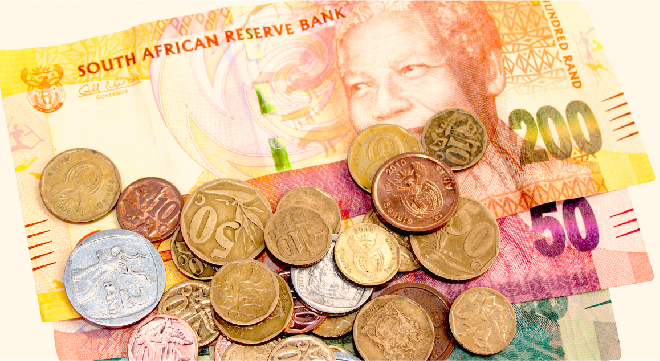Revenue and debt projections set out by Finance Minister Enoch Godongwana in his Medium-Term Budget Policy Statement (MTBPS) have been described as both conservative and questionable by market commentators.
National Treasury expects surplus tax revenue collections over the next three years, with debt levels stabilising at 69% in 2024/25. Factors threatening these estimates include the war in the Ukraine, loadshedding and concerns about unfunded spending or the materialisation of contingent liabilities that will increase borrowing costs.
Unbudgeted expenses
Sharon Smulders, project director of tax advocacy at the South African Institute of Chartered Accountants, says a major concern is the contingent liability guarantees of municipalities and some of the state-owned enterprises.
These are all unbudgeted expenses that were not included in the medium-term budget projections. “It is a huge concern, especially on the municipalities side,” she said.
National Treasury is talking about strengthening its early-warning systems to improve oversight to offer timeous assistance to struggling municipalities.
Smulders believes details about municipalities that are in real financial distress have not been adequately addressed over the medium term.
The government has spent R9 billion across 40 state agencies in 2019/20 to help municipalities build capacity and function effectively.
Treasury notes that by the end of the third quarter of 2021/22, more than 40 municipalities were experiencing financial and service delivery crises.
In the MTBPS, it admits that interventions have been ineffective largely because of poor co-ordination among stakeholders, reluctance to address dysfunctional councils, and ineffective monitoring and implementation of financial recovery plans.
Mountain of debt
South Africa’s public debt has risen sevenfold, from R577bn in 2007 to more than R4 trillion in 2021.
Godongwana says in the MTBPS because of this massive increase in debt, interest payments now exceed spending on essential services such as health and security.
The government is considering various policy approaches to safeguard “fiscal sustainability”. Treasury has “tested” the appropriateness of fiscal rules, such as a debt ceiling, to limit excessive deficits. Work in this regard is ongoing given the economic volatility and the country’s large development needs.
Smulders raises concerns about the fact that the government simply keeps raising the expenditure ceiling.
“We have been lucky in the past because of windfalls in tax revenue collections, but how long can that continue. I do not believe it is permanent.”
Treasury projects tax collection overruns of R83bn for this fiscal year, R95bn for 2023/24 and almost R100bn in 2024/25.
Even Godongwana has warned that there are several factors that could impact these projections, and if they materialise, the estimates will have to be adjusted downwards.
“If we get our revenue projections wrong, it means we will still have to pay for the expenses. This means a double whammy. We will have less revenue but more expenditure, which will ultimately result in higher debt levels,” says Smulders.
Maarten Ackerman, chief economist at Citadel, says loan debt as a share of GDP was 75% in February this year and was adjusted to 71% for this year given the better-than-expected revenue collections.
“However, if we assume government takes on R200bn of Eskom’s debt, the peak will probably be north of 75% again.”
Put differently, Eskom’s total debt of R400bn equates to 6% of GDP, says George Herman, Citadel’s chief investment officer.
The government intends taking over one-third or two-thirds, which will equate to between 2% and 4% of GDP, explains Herman.
Fair and balanced, but…
The Citadel analysts says the minister did make a fair and balanced assessment of the risks facing the country. However, although government knows what the remedies are, there is still the risk that Treasury’s good intentions would be derailed in the implementation phase.
“The budget is quite well balanced between social and investment spending priorities. One can’t say this is a purely populist budget,” they said in a statement following Godongwana’s speech in Parliament.
“But whether we can get this well-crafted budget over the line at the implementation stage, to help the economy grow, and not lose much of it to inaction, mismanagement and corruption, is what will really matter in the months ahead,” says Ackerman.
Real build or patchwork?
The importance of infrastructure development to increase economic growth remains a key feature of almost every budget.
Godongwana indicated that government infrastructure spending is expected to increase to R125bn by 2025/26.
“Godongwana’s increased infrastructure spending will be positive for job creation and economic stimulus, but only if we can address current bottlenecks and flawed tender processes,” says Ackerman.
The government admits that the projected growth levels over the next three years (an average of 1.6% over the period) are insufficient to tackle the biggest threats to social stability, namely high poverty and unemployment.
Smulders says the spending does not appear to be directed at new projects but at repairs and maintenance.
“There has not been sufficient feedback on what is happening in terms of infrastructure development to give assurance that it is getting the attention it deserves,” she adds.
Amanda Visser is a freelance journalist who specialises in tax and has written about trade law, competition law and regulatory issues.
Disclaimer: The views expressed in this article are those of the writer and are not necessarily shared by Moonstone Information Refinery or its sister companies.



